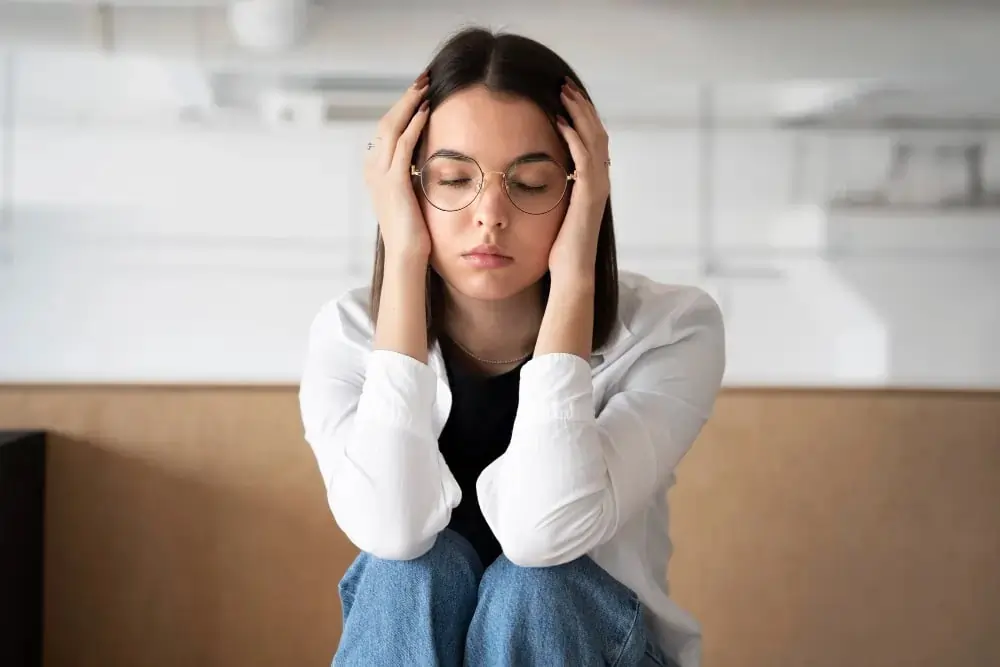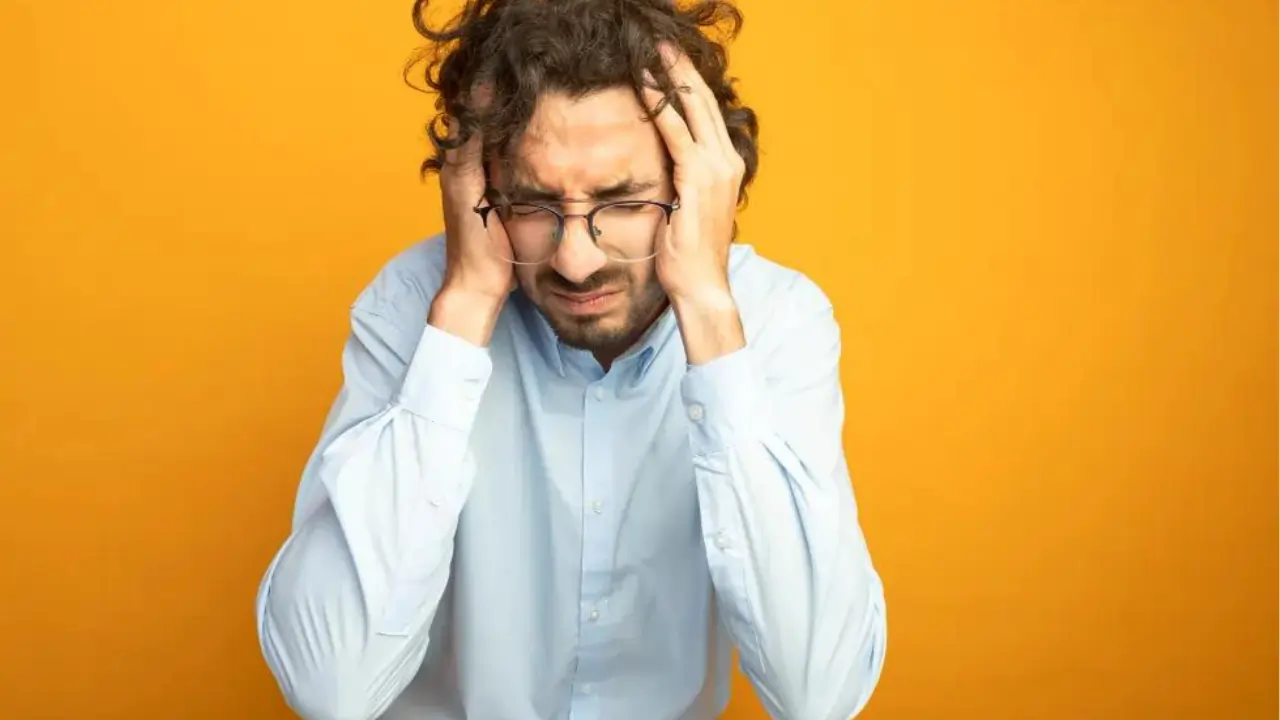Anxiety is a normal and healthy emotion that helps us cope with stress, danger, and uncertainty. However, when anxiety becomes excessive, persistent, and irrational, it can interfere with our daily functioning and well-being. This is when anxiety becomes a disorder.
Anxiety disorders are a group of mental illnesses that cause constant fear and worry. They affect millions of people around the world and can have serious consequences for their physical and mental health. In this article, we will explore what anxiety disorders are, what causes them, what are the common symptoms, and how they can be treated.
What are the types of anxiety disorders?
There are many types of anxiety disorders, each with its own characteristics and triggers. Some of the most common ones are:
- Generalized anxiety disorder (GAD): This is a chronic condition that involves excessive and uncontrollable worry about various aspects of life, such as health, work, family, or finances. People with GAD often feel restless, nervous, irritable, and have trouble sleeping or concentrating.
- Panic disorder: This is a condition that involves recurrent and unexpected panic attacks, which are sudden and intense episodes of fear and discomfort that peak within minutes. Panic attacks can cause symptoms such as palpitations, sweating, trembling, shortness of breath, chest pain, nausea, dizziness, and fear of losing control or dying. People with panic disorder often develop agoraphobia, which is a fear of places or situations where escaping or getting help may be difficult or embarrassing.
- Social anxiety disorder (SAD): This is a condition that involves a marked and persistent fear of social or performance situations, where the person is exposed to possible scrutiny or judgment by others. People with SAD often feel embarrassed, self-conscious, and afraid of being rejected or criticized. They may avoid or endure social situations with intense anxiety or distress, which can affect their personal, academic, or professional lives.
- Obsessive-compulsive disorder (OCD): This is a condition that involves recurrent and intrusive thoughts, images, or impulses (obsessions) that cause anxiety or distress, and repetitive behaviors or mental acts (compulsions) that the person feels driven to perform to reduce or neutralize the anxiety or distress. People with OCD may spend hours a day performing compulsions, such as washing, checking, counting, or arranging, which can interfere with their normal functioning and quality of life.
- Post-traumatic stress disorder (PTSD): This is a condition that involves persistent and distressing symptoms that occur after experiencing or witnessing a traumatic event, such as a war, a natural disaster, a violent assault, or a serious accident. People with PTSD may relive the event through nightmares, flashbacks, or intrusive memories, and may avoid anything that reminds them of the trauma. They may also experience negative changes in their mood, thoughts, and behavior, such as feeling detached, numb, angry, guilty, or hopeless, and having trouble sleeping, concentrating, or trusting others.
These are not the only types of anxiety disorders. There are also other specific phobias, such as fear of heights, animals, blood, or flying, and other related conditions, such as separation anxiety disorder, selective mutism, and body dysmorphic disorder.
What causes anxiety disorders?
The exact cause of anxiety disorders is not fully understood, but it is likely the result of a combination of factors, such as:
- Genetics: Anxiety disorders tend to run in families, suggesting that some people may inherit a tendency to develop them.
- Brain chemistry: Anxiety disorders may be associated with abnormal levels or activity of certain neurotransmitters, which are chemical messengers that regulate mood, cognition, and behavior.
- Personality: Some personality traits, such as neuroticism, perfectionism, or low self-esteem, may make some people more prone to anxiety disorders.
- Environment: Stressful or traumatic life events, such as abuse, violence, loss, or illness, may trigger or worsen anxiety disorders in some people.
- Learning: Some anxiety disorders may be learned through observation or experience, such as developing a fear of dogs after being bitten by one, or a fear of flying after witnessing a plane crash.
What are the symptoms of anxiety disorders?
The symptoms of anxiety disorders vary depending on the type, severity, and duration of the condition, but they generally include:
- Physical symptoms: These are the bodily sensations that accompany anxiety, such as racing heart, sweating, trembling, shortness of breath, chest pain, nausea, dizziness, headache, or muscle tension.
- Cognitive symptoms: These are the thoughts that fuel anxiety, such as worrying, catastrophizing, ruminating, or having irrational beliefs or fears.
- Behavioral symptoms: These are the actions that result from anxiety, such as avoiding, escaping, or enduring feared situations, performing compulsions, or seeking reassurance or safety.
- Emotional symptoms: These are the feelings that arise from anxiety, such as fear, nervousness, panic, dread, or distress.
The symptoms of anxiety disorders can cause significant impairment and distress in various domains of life, such as social, academic, occupational, or personal.
How are anxiety disorders diagnosed?
Anxiety disorders are diagnosed by a mental health professional, such as a psychiatrist, psychologist, or counselor, who will conduct a comprehensive assessment that may include:
- Medical evaluation: This is to rule out any physical causes or conditions that may explain or contribute to the symptoms of anxiety, such as thyroid problems, heart disease, or substance abuse.
- Psychological evaluation: This is to determine the type, severity, and impact of the anxiety disorder, as well as any other co-occurring mental disorders, such as depression, bipolar disorder, or personality disorder. The evaluation may involve interviews, questionnaires, or standardized tests.
- Diagnostic criteria: This is to compare the symptoms and signs of the anxiety disorder with the established criteria in the Diagnostic and Statistical Manual of Mental Disorders (DSM-5), which is the official handbook for diagnosing mental disorders.
The diagnosis of anxiety disorders is not always straightforward, as some people may have more than one type of anxiety disorder, or have symptoms that overlap with other mental or physical conditions. Therefore, it is important to seek professional help and get an accurate diagnosis.
How are anxiety disorders treated?
Anxiety disorders are treatable, and there are various options available, depending on the type, severity, and preference of the person. The most common and effective treatments are:
Medication: This involves taking prescribed drugs that can help reduce the symptoms of anxiety by affecting the brain chemistry. The most common types of medication for anxiety disorders are antidepressants, such as selective serotonin reuptake inhibitors (SSRIs) or serotonin-norepinephrine reuptake inhibitors (SNRIs), and anti-anxiety drugs, such as benzodiazepines or buspirone. Medication can have side effects, such as nausea, drowsiness, weight gain, or sexual dysfunction, and may not be suitable for everyone, especially those with a history of substance abuse or dependence. Therefore, medication should be taken under the guidance and supervision of a doctor, who will monitor the dosage, effectiveness, and safety of the medication.
Psychotherapy: This involves talking to a trained therapist who can help the person understand the causes and effects of their anxiety disorder, and provide them with skills and strategies to cope with and overcome their anxiety. The most common and effective type of psychotherapy for anxiety disorders is cognitive-behavioral therapy (CBT), which focuses on changing the negative and irrational thoughts and behaviors that fuel anxiety and replacing them with more positive and realistic ones. CBT can also include exposure therapy, which involves gradually and systematically confronting the feared situations or stimuli until the person becomes less anxious and more confident. Psychotherapy can be done individually, in groups, or with family members, and can be delivered in person, online, or over the phone.
Self-help: This involves taking steps to manage and reduce anxiety on one’s own, by making lifestyle changes, practicing relaxation techniques, or using online resources or apps. Some of the self-help strategies that can help with anxiety disorders are:
- Exercise: Physical activity can help release endorphins, which are natural chemicals that improve mood and reduce stress. Exercise can also distract from worries, improve self-esteem, and enhance physical health. It is recommended to do at least 30 minutes of moderate exercise, such as walking, jogging, cycling, or swimming, at least five times a week.
- Diet: Eating a balanced and nutritious diet can help provide the body and brain with the essential nutrients and energy they need to function well and cope with stress. It is advisable to avoid or limit foods and drinks that can worsen anxiety, such as caffeine, alcohol, sugar, or processed foods, and to eat more foods that can help calm anxiety, such as fruits, vegetables, whole grains, lean proteins, nuts, seeds, or herbal teas.
- Sleep: Getting enough and quality sleep can help restore and regulate the body and brain, and improve mood and cognition. Sleep deprivation can exacerbate anxiety, impair concentration, and affect decision-making. It is recommended to get at least seven to nine hours of sleep per night and to follow good sleep hygiene practices, such as having a regular bedtime and wake-up time, avoiding caffeine, alcohol, or nicotine before bed, keeping the bedroom dark, quiet, and comfortable, and avoiding screens or stimulating activities before bed.
- Relaxation: Practicing relaxation techniques can help lower the physical and mental arousal that accompanies anxiety, and induce a state of calmness and well-being.
Conclusion
Anxiety disorders are common and treatable mental illnesses that cause excessive and persistent fear and worry. They can affect anyone, regardless of age, gender, culture, or background, and can have serious consequences for their physical and mental health. However, with proper diagnosis and treatment, people with anxiety disorders can overcome their anxiety and lead fulfilling and productive lives. If you or someone you know is struggling with anxiety, do not hesitate to seek professional help and support. You are not alone, and there is hope.
FAQs
Q: What is the difference between normal anxiety and anxiety disorder?
- A: Normal anxiety is a natural and adaptive emotion that helps us cope with stress, danger, or uncertainty. It is usually temporary, proportional, and manageable. Anxiety disorder is a mental illness that involves excessive, persistent, and irrational anxiety that interferes with daily functioning and well-being. It is usually chronic, disproportionate, and overwhelming.
Q: How common are anxiety disorders?
- A: Anxiety disorders are the most common mental disorders in the world, affecting about 284 million people, or 4% of the global population, according to the World Health Organization (WHO). They are more prevalent among women than men and among younger than older adults.
Q: What are the risk factors for developing anxiety disorders?
- A: There is no single cause of anxiety disorders, but rather a combination of genetic, biological, psychological, and environmental factors. Some of the risk factors that may increase the likelihood of developing anxiety disorders are having a family history of anxiety or other mental disorders, having a personality trait that makes one more prone to anxiety, such as neuroticism or perfectionism, experiencing stressful or traumatic life events, such as abuse, violence, loss, or illness, having a physical condition or illness that can cause or worsen anxiety, such as thyroid problems, heart disease, or diabetes, or using or abusing substances that can affect the brain chemistry, such as caffeine, alcohol, nicotine, or drugs.
Q: How can I cope with anxiety at the moment?
- A: Some strategies can help you cope with anxiety at the moment, such as taking deep and slow breaths, focusing on the present and your senses, challenging your negative and irrational thoughts, using positive affirmations or coping statements, distracting yourself with a pleasant or engaging activity, seeking social support from a trusted person, or using relaxation techniques, such as meditation, yoga, or progressive muscle relaxation.
Q: Where can I find more information or help for anxiety disorders?
- A: Many online resources and organizations can provide you with more information or help for anxiety disorders, such as:
- Anxiety and Depression Association of America (ADAA): A nonprofit organization that provides education, resources, and support for people with anxiety, depression, and related disorders.
- National Institute of Mental Health (NIMH): A government agency that conducts and supports research on mental disorders and provides information and publications on anxiety disorders and other mental health topics.
- International OCD Foundation (IOCDF): A nonprofit organization that provides information, resources, and support for people with obsessive-compulsive disorder (OCD) and related disorders.
- Association for Behavioral and Cognitive Therapies (ABCT): A professional organization that promotes the use and dissemination of evidence-based psychological treatments, such as cognitive-behavioral therapy (CBT), for mental disorders. It also provides a directory of therapists who practice CBT and other behavioral therapies.




